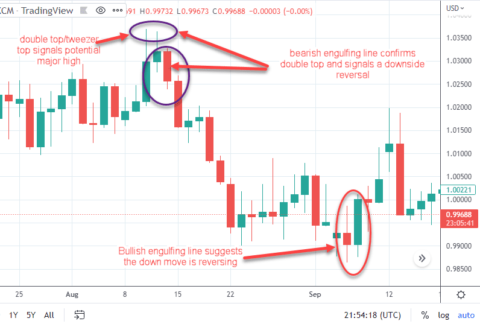Investing can be one of the most effective ways to achieve your financial goals, whether you’re planning for retirement, buying a home, or saving for a major expense. However, the investment strategy you choose can make a big difference in how quickly or safely you reach those goals. Each investor’s situation is unique, and the right approach depends on various factors like your risk tolerance, time horizon, and financial goals.
Financial goals can vary widely, and understanding your priorities will guide your approach. For example, short-term goals, such as saving for a vacation or a car, typically require lower-risk investments that are easy to convert to cash. Long-term goals, like retirement, often give investors more flexibility to take on higher risk since they have more time to recover from market downturns. The further away your goal, the more aggressive your investment strategy can be, as you have the potential to earn higher returns.
Top-Down vs. Bottom-Up Investing
Top-down and bottom-up investing are two popular strategies with distinct approaches to analyzing markets and selecting investments.
In a top-down approach, investors start by examining broad economic trends, such as national or global factors, then focus on sectors or industries with growth potential. They then select individual stocks within those sectors.
In contrast, the bottom-up approach emphasizes individual companies’ fundamentals, such as financial health, management, and competitive advantages, regardless of broader market conditions. Proponents believe strong companies can succeed even in challenging economic environments.
For investors seeking guidance on which strategy might fit their investment style, Riverbend Wealth Management can provide a personalized consultation. Their advisors offer insights into how top-down and bottom-up approaches can be incorporated into your overall investment strategy, helping you align your portfolio with your financial goals and risk tolerance. You can visit their website, riverbendwealthmanagement.com, to find out more. By working with their team, you can gain a deeper understanding of these methods and make informed decisions based on expert analysis.
Active vs. Passive Investing
Another key decision when choosing an investment approach is whether to follow an active or passive strategy. Both have their advantages, and the right choice depends on your goals, time commitment, and risk tolerance.
Active investing involves making frequent trades in an attempt to outperform the market. Investors or fund managers actively research, buy, and sell stocks or other assets, looking for opportunities to capitalize on short-term movements. The goal is to beat market averages by picking the right investments at the right time. Active investors often pay close attention to market news, company reports, and economic data to make informed decisions. While this approach has the potential for higher returns, it also comes with higher fees and greater risks. Constant buying and selling can generate transaction costs, and active management fees tend to be more expensive.
On the other side, passive investing is all about minimizing effort and sticking with long-term growth. Instead of trying to pick the best stocks, passive investors buy into index funds or exchange-traded funds (ETFs) that track a market index, like the S&P 500. The idea is to match the market’s performance rather than beat it. This approach tends to come with lower fees, as there is less trading and fewer management costs. Passive investing requires less time and knowledge compared to active strategies, making it a popular choice for people looking for a hands-off way to grow their wealth.
Which one is right for you? If you enjoy following market trends and want to be actively involved, active investing might be appealing. However, if you prefer a more consistent, low-cost strategy, passive investing could be a better fit.
Growth vs. Income Investing
When planning for your financial goals, it’s also important to decide whether growth or income investing makes the most sense for you. These two approaches offer different types of returns, and the right choice depends on your needs.
Growth investing focuses on companies that are expected to grow significantly over time. These are often companies that reinvest their profits to expand their business instead of paying dividends to shareholders. Investors look for businesses with high growth potential in industries like technology or healthcare. The returns from growth investing typically come from capital gains when you sell your shares for more than you paid. While this approach can offer high returns, it also involves more risk, as growth companies tend to be more volatile.
Income investing, on the other hand, focuses on generating regular cash flow from your investments. This is typically done through dividends from stocks or interest from bonds. Investors looking for stable, consistent income might choose dividend-paying stocks or reliable bonds to build their portfolio. Income investing is often favored by those who need steady payments, like retirees, or those who prefer lower-risk investments.
Choosing between growth and income investing depends on your financial goals and time horizon. If you’re saving for retirement or another long-term goal, growth investing might be the right fit. But if you’re looking for a steady income, perhaps to supplement your salary or retirement savings, income investing could be a better option.
Diversification and Risk Management
No matter what strategy you choose, diversification is key to managing risk. Putting all your money into one type of investment or one sector can leave you vulnerable to market swings. Diversification involves spreading your investments across different asset classes, such as stocks, bonds, and real estate, as well as different industries and geographic locations.
By diversifying, you reduce the risk of losing a significant portion of your portfolio if one sector or investment performs poorly. A well-diversified portfolio can provide more stable returns over time, helping you achieve your financial goals without taking on unnecessary risk.
Choosing the right investment approach involves understanding your financial goals, risk tolerance, and time horizon. Whether you opt for an active or passive strategy, focus on growth or income, or prefer top-down or bottom-up investing, the most important thing is that your approach aligns with what you’re trying to achieve. By thinking carefully about your options and staying informed, you can set yourself up for long-term success.





